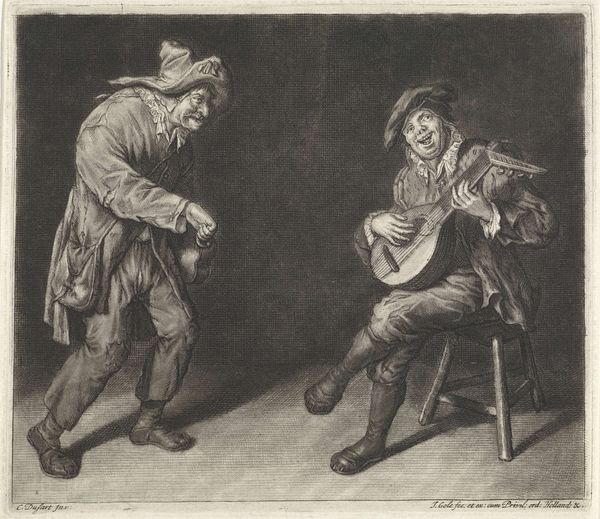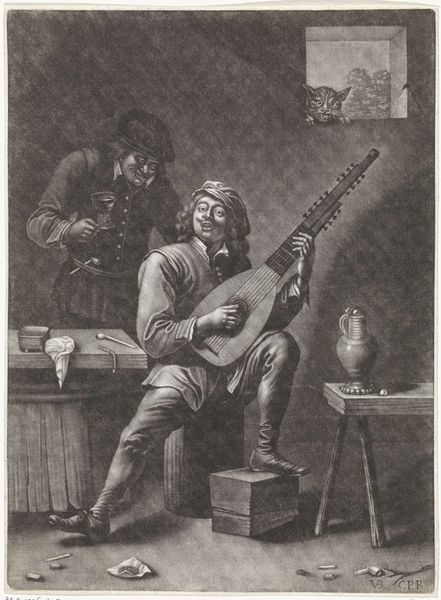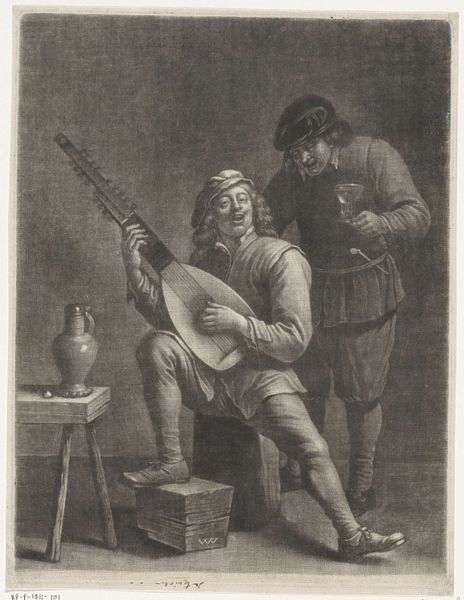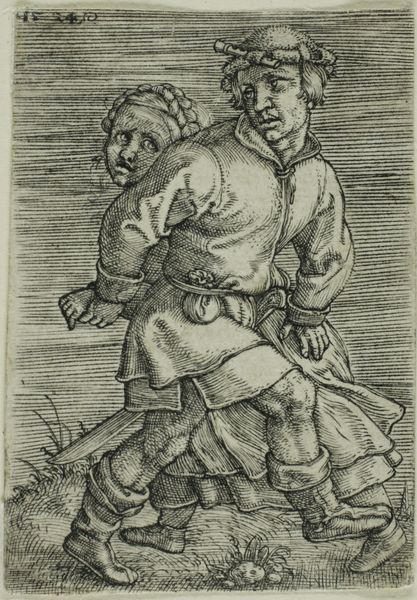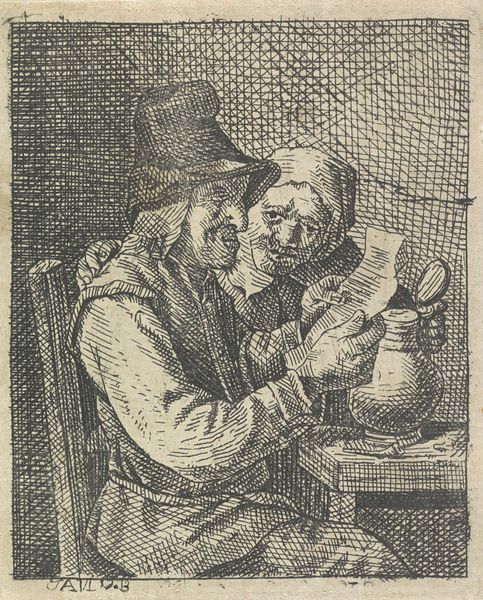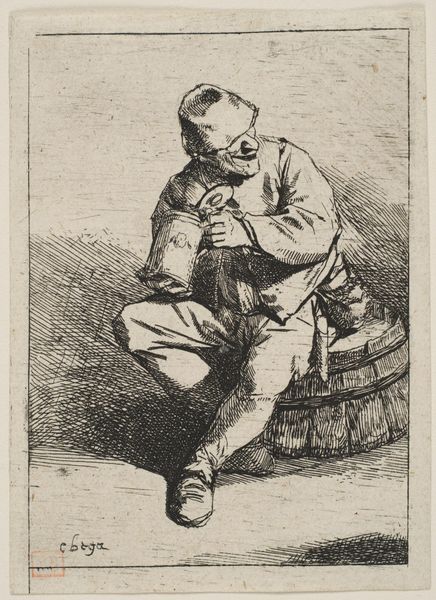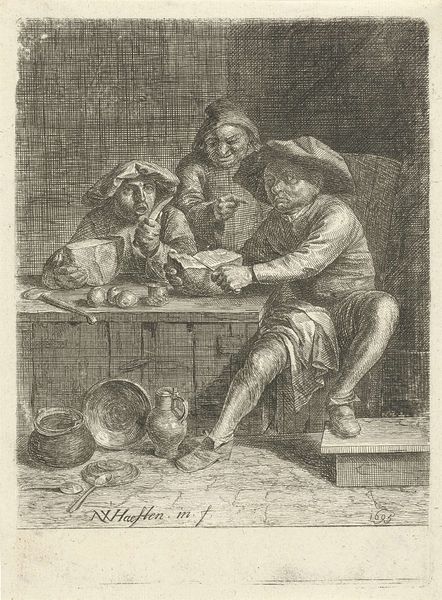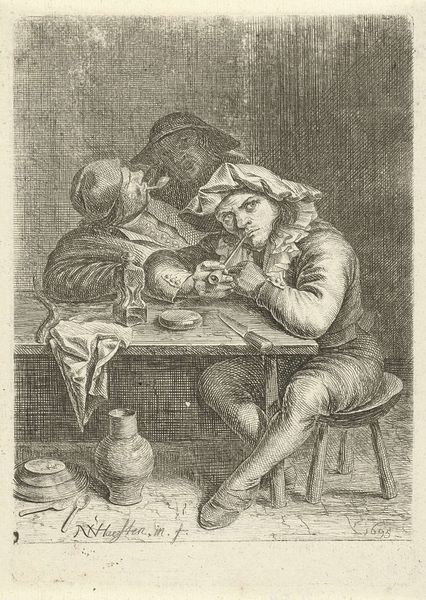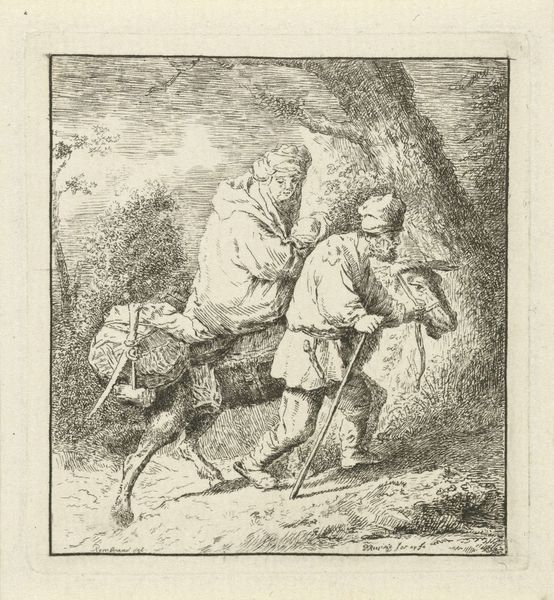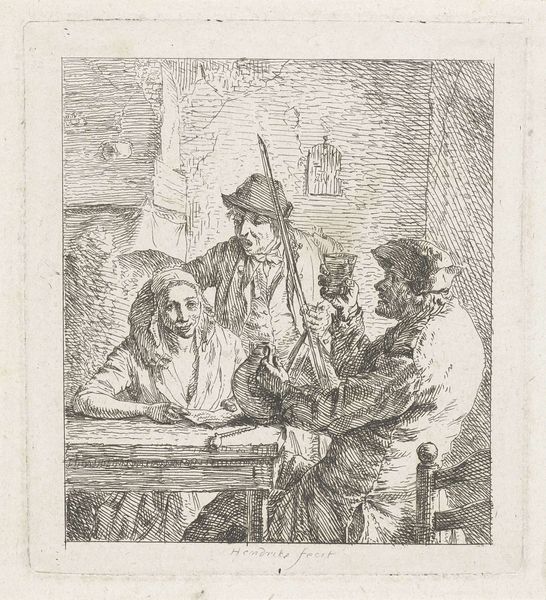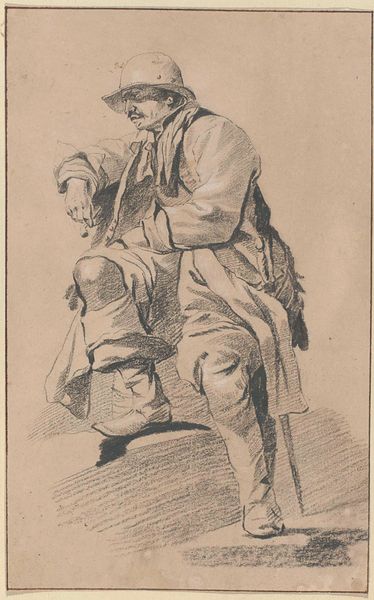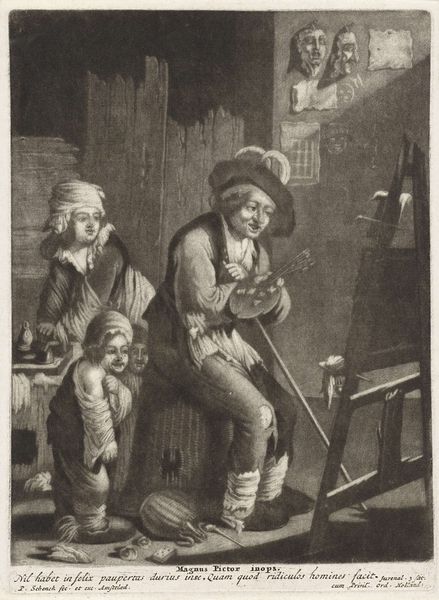
print, engraving
#
portrait
#
baroque
#
dutch-golden-age
# print
#
old engraving style
#
portrait drawing
#
genre-painting
#
engraving
Dimensions: height 113 mm, width 164 mm
Copyright: Rijks Museum: Open Domain
Curator: Well, if it isn’t an image brimming with good times, good drink, and likely questionable music. What jumps out to you here? Editor: The density, almost a claustrophobia created by the tight crosshatching. It’s dizzying. The eye is drawn immediately to the light catching on the lute player's face and then snagged by the background. Curator: Exactly! Now, let’s dive in. What we have here is "Lute Player and Old Woman" by Cornelis Bega. It's currently residing here at the Rijksmuseum, thankfully under much better lighting than our characters seem to be enjoying. It's an engraving, dating sometime between 1642 and 1664. So tell me, formally speaking, what does that density you noticed achieve? Editor: Structurally, the engraving technique allows Bega to play with depth, to imply shadow without any chromatic variation. The lines pull double duty representing form and also feeling. Curator: Absolutely. It's that texture that truly makes the image. You can almost feel the roughness of the walls, hear the off-key strumming of the lute. Bega had a real knack for capturing these moments of everyday, slightly chaotic life. But also a real feeling, wouldn't you say? There's something about that shared space, that camaraderie – even if it’s fueled by…other motivations. Editor: Motives? I would say a social commentary could be drawn about dependence and aging. The old woman appears complicit and dependent, the young man a conduit. There is a relationship established solely through what appears to be transaction. A visual construction. Curator: Perhaps. Or perhaps a shared fondness. He's got that mischievous glint in his eye and she has her glass full. Ultimately, art is in the eye of the beholder and our perspectives on it inevitably say just as much about us as they do about the piece itself, eh? Editor: Indeed, perspectives become a type of medium when deconstructing art.
Comments
No comments
Be the first to comment and join the conversation on the ultimate creative platform.
